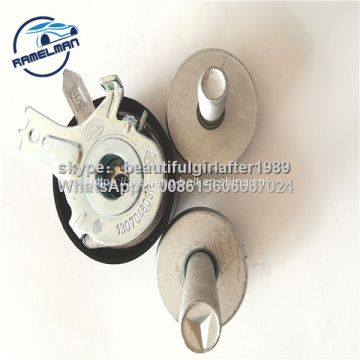BHPian Sankar recently shared this with other enthusiasts.
This is not new and seems to have started with the Ford 1.8TDCI engine as a timing belt, but the Peugeot predates the ford in using a wet belt but to drive the fuel pump. Ford and PSA have collaborated to create a bunch of shared engines in the past so the connection is quite natural. It seems the Honda and a few others have also joined this wet belt bandwagon. For the owners of the Ford 1.8TDCI there is a chain conversion kit available for the wet belt. Industrial Belting Company

What I gathered is that this timing belt in oil is not in the interest of the end consumer, these are for the benefit of the manufacturer who has to meet certain emission and fuel efficiency norms on the whole across their product portfolio. So they look for avenues to extract the tiniest of efficiency gains from wherever they can and reliability be damned. The belt in oil has 30% less frictional losses than a timing chain system for a net 1% fuel efficiency gain.
But they don't seem to be very reliable going by the information available on the internet. The most common issue is the belt gradually wearing off in the oil and the belt dust settling in the sump and then blocking oil pump intake. There's a new belt of another chemistry which is supposedly better. But ironically the manufacturer recommends reduced replacement intervals with this new belt.
Ford's Ecoboost 1.0 and the new Puretech 1.2 by PSA are two engines with wet belt systems sold in India per my knowledge.
Here's what BHPian Vishy76 had to say on the matter:
Thanks for this thread. I believe a timing belt system itself is a step back from timing chains. Timing belts have the following drawbacks over chains in my opinion:
Here's what chains can't do as well as belts:
Coming to belts immersed in oil, I think it's a rubbish piece of technology. I am a part of a Ford Transit owners group on FB and I see numerous owners complaining that pieces of the timing belt were found in the oil sump strainer!
The integrity of the belt is compromised, but more importantly, the engine head could potentially be starved of oil and seize if bits and pieces of the belt choke the sump strainer enough. These belts are also expensive as compared to traditional timing belts. I don't see the point of having these if they need replacement as well in the first place and are only going to last slightly longer than the traditional stuff. To me, a timing belt immersed in oil is the worst of both worlds.
If you thought timing belts were perfect examples of engineering obsolescence, the auto industry just one upped you . As always, I think it was better to stick to the good old timing chains than come up with these rubber contraptions.
Here's what BHPian UD17 had to say on the matter:
Advantage of chains: Durable, Less width (saves some packaging space in Z direction)
Disadvantages of chains: Costly (& costly sub components like chain guide/tensioners), High weight, Needs lubrication, noisy, Sensitive to temperature (cold/Hot engine), Now biggest one is the tendency to not allow any stretch (Chain system works in relatively high tension which takes more energy from the engine - parasitic losses), Need for higher cleanliness specification
Advantage of Belt: Weight less, Stretchable (Can handle some tricky situation without snapping), Can work in low tension (as compared to chain), Low cost, no sealing required, low cost (of belt & subcomponents like tensioners)
Disadvantages of Belt: Durability (as compared to chains, But modern HBR belts are durable till 300K Kms), sensitive to side tracking (edge wear possibility), Low replacement intervals (some OEMs have even as low as 100,000 kms)
Belt in oil: is now a mix approach of the above two, where the advantage of belt are achieved with the sealing lubrication (that's why called belt in oil). Here we get advantage of chains and belt both but looses on the major risk of the contamination & loss of tensioner damping in oil environment.
Traditionally European customers prefer more of a timing belt, while Japanese OEMs prefers Chains. American have mixed approach to this. But as far as i can see in the business world, the timing belts application are getting reduced.
Here's what BHPian carthick1000 had to say on the matter:
In the past when I had ICE cars, I used to do maintenance myself and topics like this get my attention straightaway. But moving to electric mobility few years ago and never have to deal with understanding hundreds of components and tens of replacement every service interval, I am feeling that I save a lot of time now-a-days.
This is a quick note (of nostalgia) to myself and some others on this forum if they are still sitting on the brim of switching to EVs.
Read BHPian comments for more insights and information.

Agricultural Belt Keep yourself tuned in to the Indian automotive scene via Twitter, Youtube or RSS feeds.